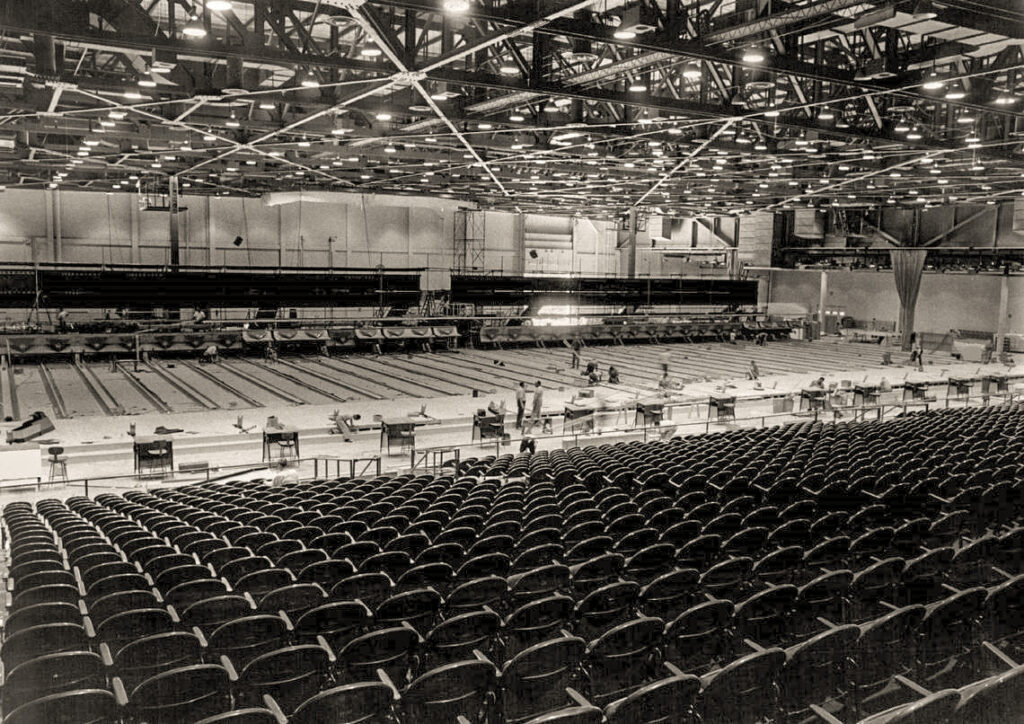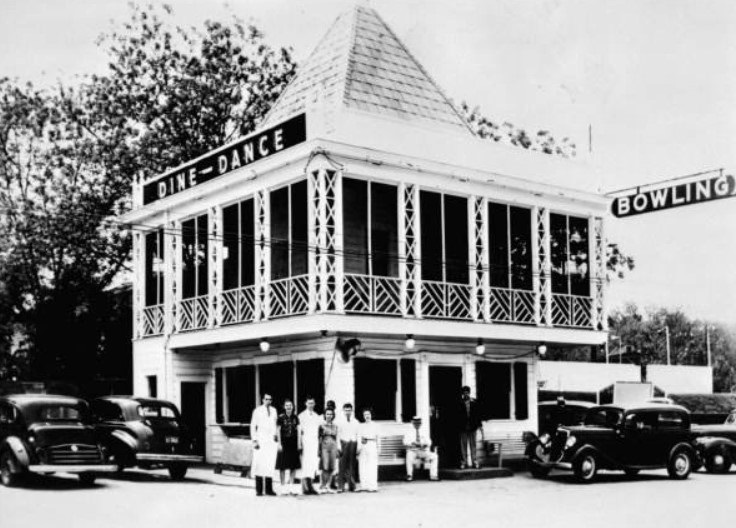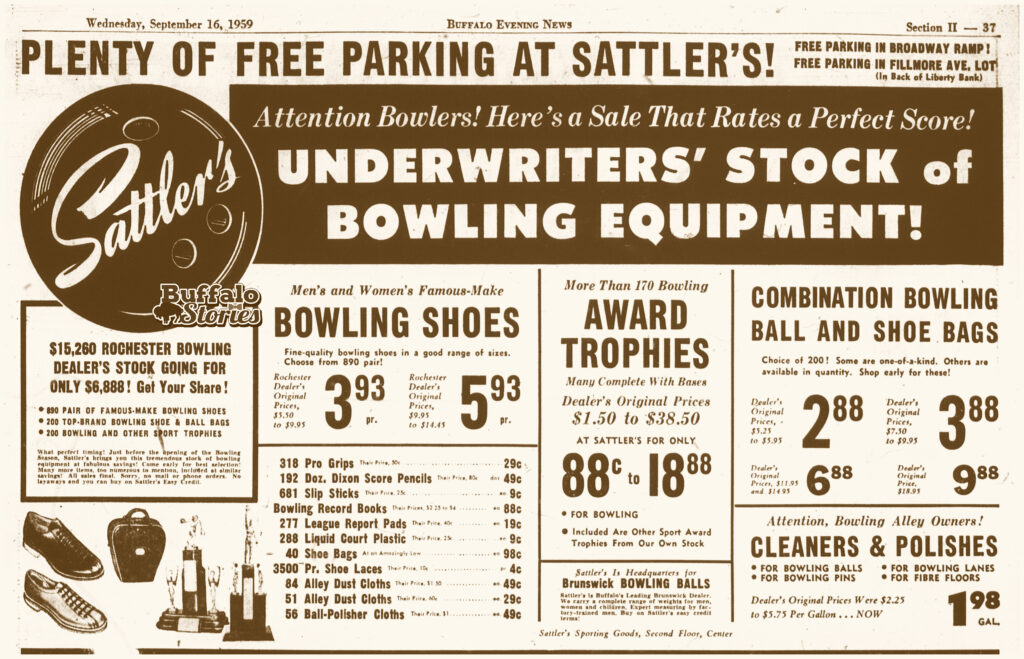Bowling for bucks and beers
In junior high, if you opted as I did to sign up for Latin instead of Spanish or French, you ran the risk of being labeled a nerd. It didn’t help that I was not much good at sports.
I tried out for football but barely made it through the first day – couldn’t catch a pass. With baseball, I’d race to snag a pop-up, get directly under it, and flat-out miss. In kickball, I once got hit hard where it hurts! I couldn’t run and dribble at the same time, so basketball was also a no-go.
I was mediocre at tennis, my college physical education sport, and played only occasionally after that. In my 70s, I decided to try hitting a few balls on one of the courts at Avenue D and 14th Street with granddaughter Anna, who was just learning to play, and her dad Eric. Rushing backward to return a lob, I ripped my Achilles tendon and ended up with a leg-length blood clot and a pulmonary embolism. So much for tennis.
The problem all along, as I discovered in my 20s during an eye exam for the Navy, was I had no depth perception. That hadn’t been an issue for me as an aviation ordnanceman; but they sure wouldn’t commission me as an aviation intelligence officer to fly around at 70,000 feet spying on bad guys I couldn’t quite see.
There were only two sports I was ever any good at. One was distance running, which only required endurance and putting one foot in front of the other. I’d tried a few times in the 1970s, when jogging was catching on across the U.S., and never made it a mile.
But one sunny afternoon in 1980, I pulled on my shorts and Nikes, hit the road, and after a few blocks, the endorphins kicked in. I ran six miles that day, and didn’t stop for 30 years, after hundreds of 5K and 10K races, a few half-marathons, and a marathon I finished at a 7:50 pace; my fastest mile was a 5:50.
The other thing I could do was bowl, a sport dating back to the ancient Egyptians (a Roman variant evolved into bocce ball); the pins were always the same distance away, so depth perception was not an issue. And my mom Maggie was a motivator. She and my dad Frenchie were in leagues and got me started on duckpins, with smaller balls a kid could handle.
The sport was introduced to this country in the 17th century, Washington Irving mentioned ninepin bowling in his 1819 short story “Rip Van Winkle,” and the game became an American craze in the 1950s and ‘60s. There were TV shows all over the U.S., including “Bowling for Dollars,” created in the 1960s by Bert Claster, the same guy who with his wife Nancy produced the kids’ hit “Romper Room” (1953-94).
The half-hour productions were franchised to local stations with hometown contestants competing for cash. Strikes or spares won $20, with consecutive strikes awarded $200 or more. The Detroit program featured extra prizes like pies from a local pizzeria, bikes, or recliner chairs. Those were simpler times!
My mom never got onto one of those shows, but she was a fanatic for the game. She and my dad Frenchie bowled every week, mainly at Bowlarama, half a mile from our house, and they would take me along when I was a kid, first to watch, later to play. Bowlarama opened in 1959, featuring only duck pins; when they later added 10-pins, I was ready. My mom eventually got a job waitressing at their soda fountain, serving Cokes and flipping burgers, saving money to help send me to University of Virginia.
In high school I’d go bowling with my buddies, and we’d sneak a smoke in the men’s room. When I headed off to college, my mom made me take my gear – ball, bag, shoes – though bowling was about the last thing on my mind at age 17 and away from home for the first time.
Still, I did have one memorable bowling experience when I was renting a room over Mincer’s Pipe Shop, at the Corner, across from the UVA “grounds” (aka, campus). There were five or six rooms on the third floor, each opening onto the long narrow hall, with a stairwell at one end leading down to the store. One evening, inspired by an abundance of adult beverages, it occurred to me and my pals Tim and Chip that our hall was the width and nearly the length of a bowling lane.
With the ball my mom insisted I bring to school, and 10 neatly arranged beer bottle empties at the stairwell end, we had our very own Big Lebowski Bowlarama! There being no shortage of empties, there was accordingly no lack of enthusiasm for the game.
We’d sweep up the glass after every round, and kept ourselves entertained, off and on, for weeks – until on one occasion the ball ricocheted off a wall, rolled through the staircase door, crashed down the three flights of steps, and was confiscated by the proprietor, Bobby Mincer, never to be returned. Decades later, on a visit to Charlottesville, my wife Alice and I were told the ball had remained on display for many years in the establishment’s business office.
Maybe Maggie would’ve approved, because I sure bowled a lotta strikes with that ball!
Rick LaFleur, who was “12 or so” in the 1950s, is retired from four decades of teaching Classics at the University of Georgia; his latest books are The Secret Lives of Words, a collection of his widely distributed newspaper columns, and Ubi Fera Sunt, a lively translation into classical Latin of Maurice Sendak’s children’s classic, Where The Wild Things Are. He and wife Alice live part of the year in Apalachicola, under the careful watch of their French bulldog Ipsa and their bobtail manx Augustus.























Meet the Editor
David Adlerstein, The Apalachicola Times’ digital editor, started with the news outlet in January 2002 as a reporter.
Prior to then, David Adlerstein began as a newspaperman with a small Boston weekly, after graduating magna cum laude from Brandeis University in Waltham, Massachusetts. He later edited the weekly Bellville Times, and as business reporter for the daily Marion Star, both not far from his hometown of Columbus, Ohio.
In 1995, he moved to South Florida, and worked as a business reporter and editor of Medical Business newspaper. In Jan. 2002, he began with the Apalachicola Times, first as reporter and later as editor, and in Oct. 2020, also began editing the Port St. Joe Star.